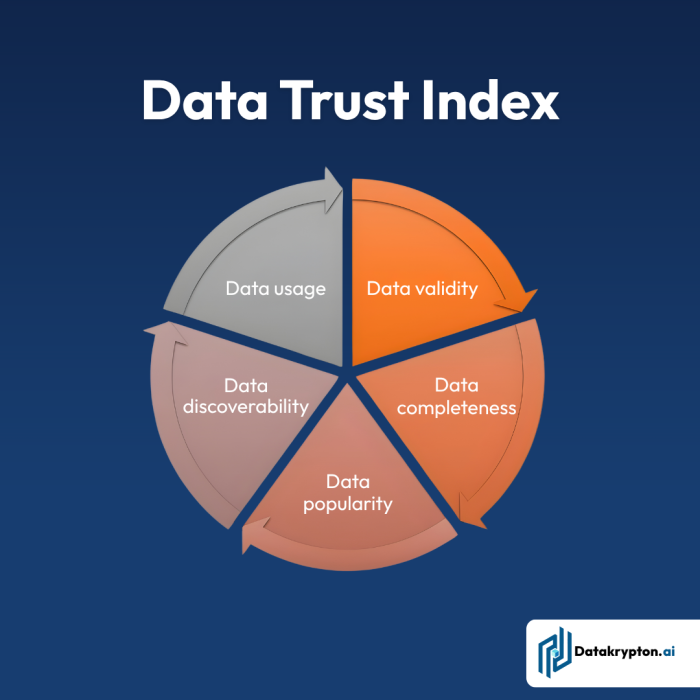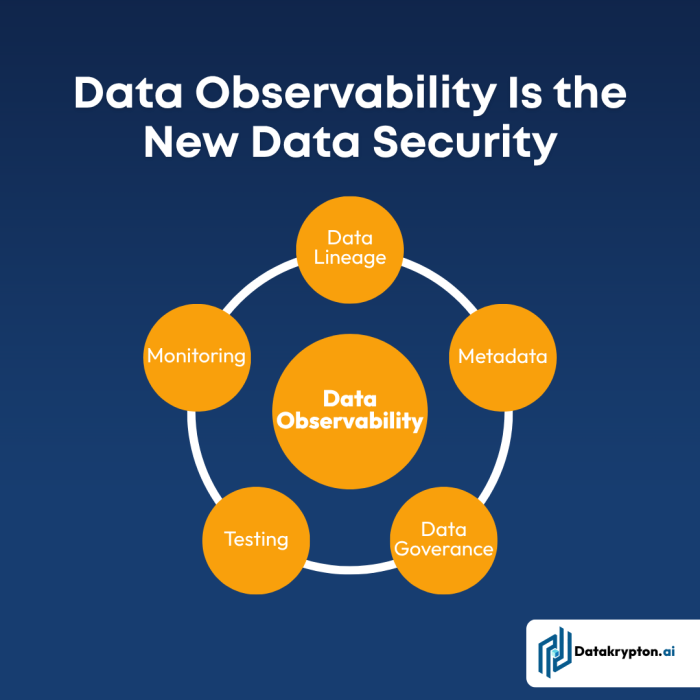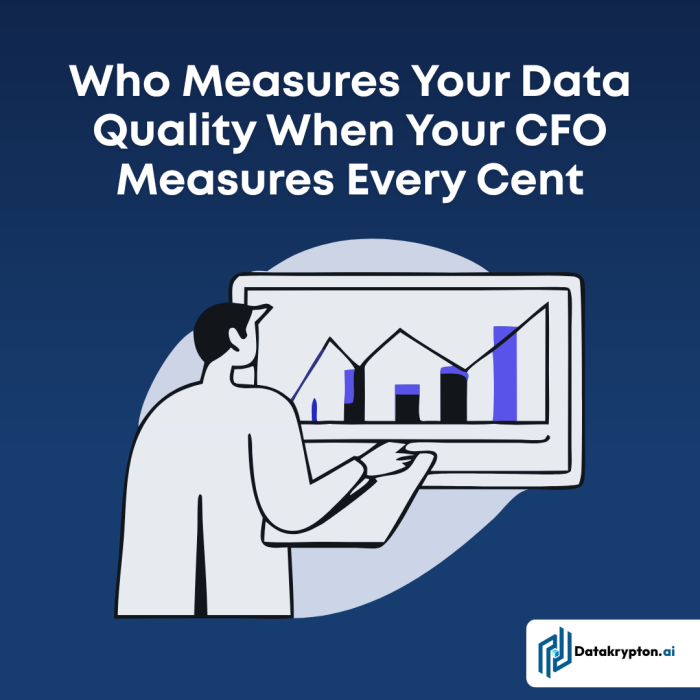Accuracy sets the baseline. Trust sets the pace.
Even when data is accurate, it often lacks consistency, clarity, or traceability across systems. That uncertainty creates hesitation.
Why Data Trust Is Becoming the New KPI for Modern Enterprises
As organizations accelerate digital transformation, a quiet but decisive shift toward data trust is taking place.
Accuracy is no longer the only measure of success. What truly defines performance today is how much the business trusts its data.
This post explains how to quantify trust, connect it to measurable business outcomes, and make it a visible KPI on every performance dashboard.
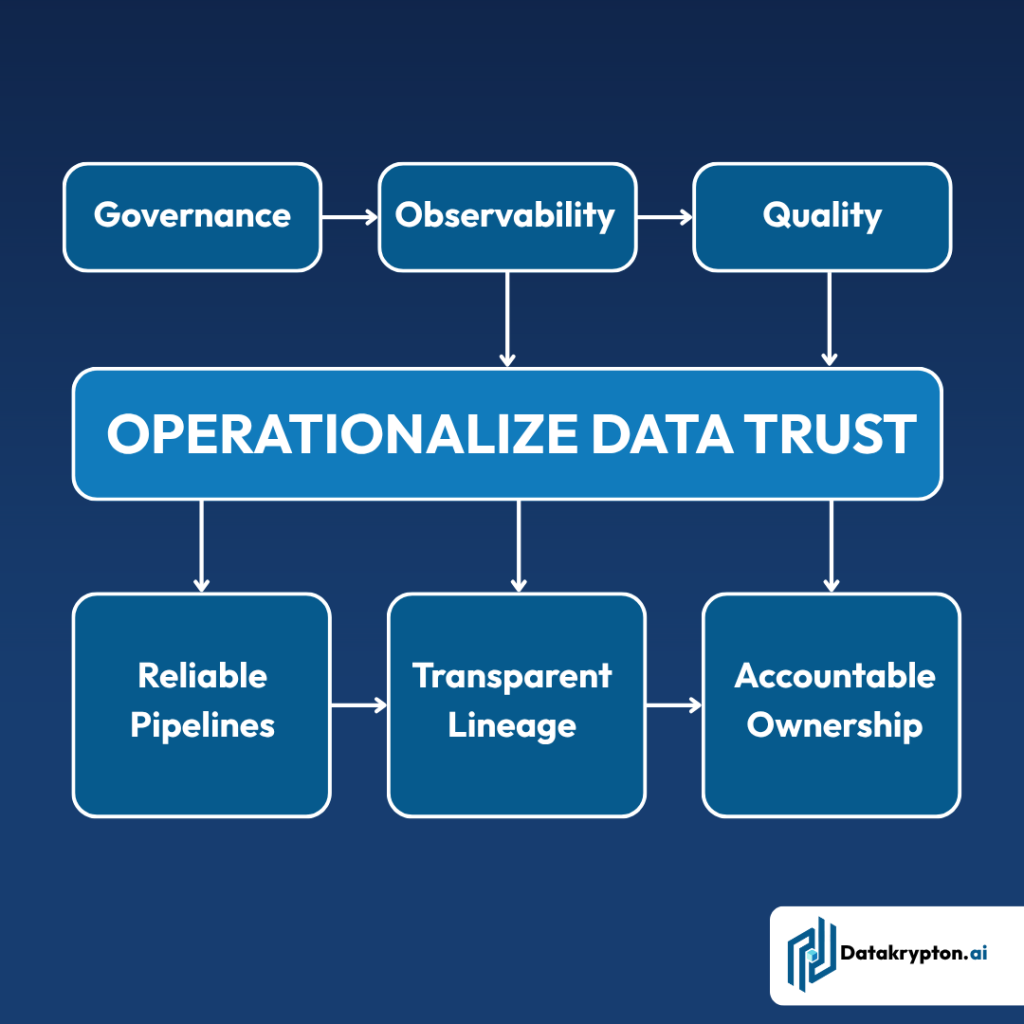
Why Accuracy Alone Is No Longer Enough
-
Key points
- Leaders delay action when reports from different sources show conflicting values
- Teams lose time validating numbers instead of driving outcomes
- AI and analytics lose credibility when lineage is unclear
- Leaders delay action when reports from different sources show conflicting values
Building trust means establishing a common understanding of where data comes from and how reliable it is at every step.
Data Trust
In today’s digital-first world, data trust has emerged as a critical driver of business success. It goes beyond accuracy, encompassing reliability, transparency, and accountability across systems. Organizations that prioritize data trust empower teams to make faster, more confident decisions, reduce operational risk, and maximize the value of analytics and AI initiatives. Establishing strong data trust ensures that stakeholders not only access data but truly rely on it as a credible foundation for strategy and innovation.
The Three Dimensions of Data Trust
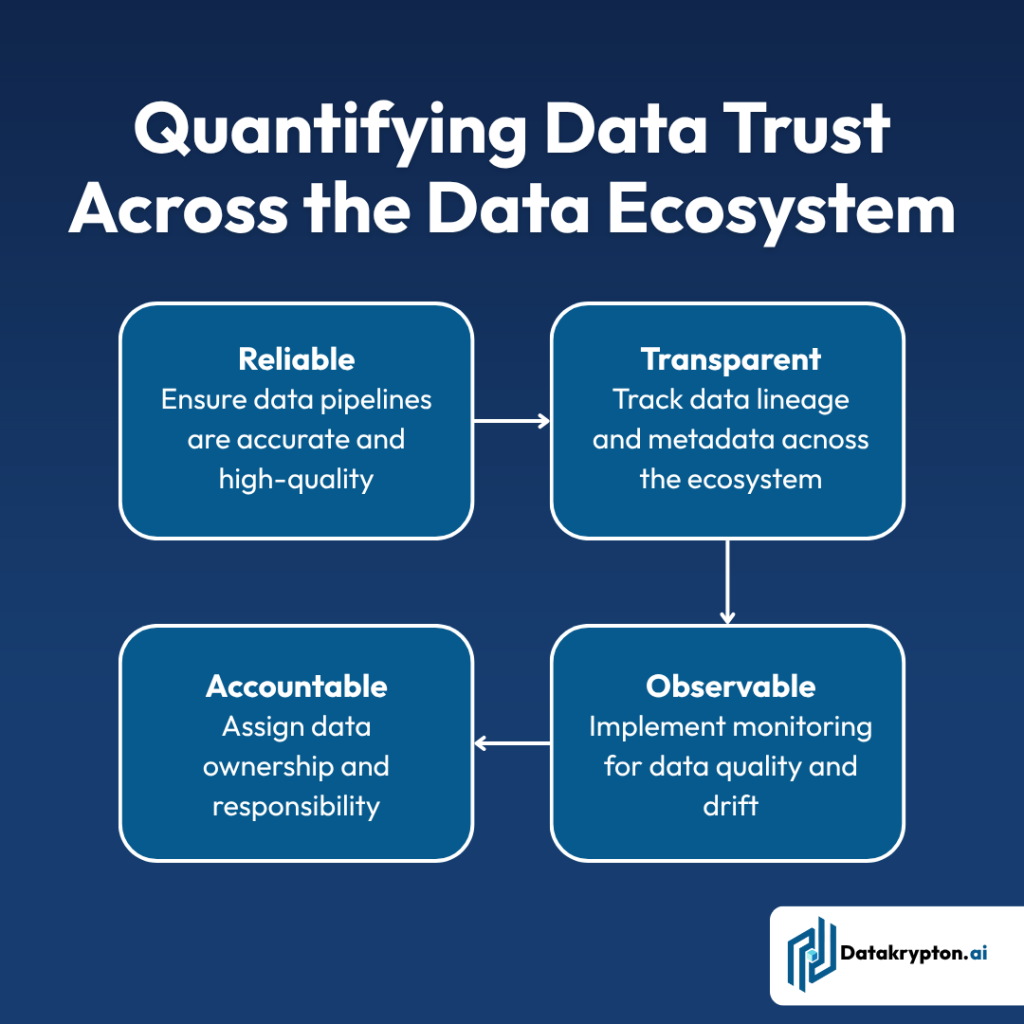
Reliability
Confidence that data is consistent, complete, and refreshed on time. Reliable pipelines ensure stable operations.
Transparency
Visibility into the source, logic, and quality of data. Transparency builds understanding between data teams and business users.
Accountability
Clear ownership and responsibility for data assets. Accountability ensures issues are detected and corrected quickly.
How to Measure Data Trust
Trust can and should be quantified. Organizations use indicators such as
-
- Percentage of verified or certified datasets
- Data quality pass rates across business domains
- Reconciliation accuracy between systems
- Number of lineage-tracked assets versus total assets
- User confidence surveys correlated with data usage
- Percentage of verified or certified datasets
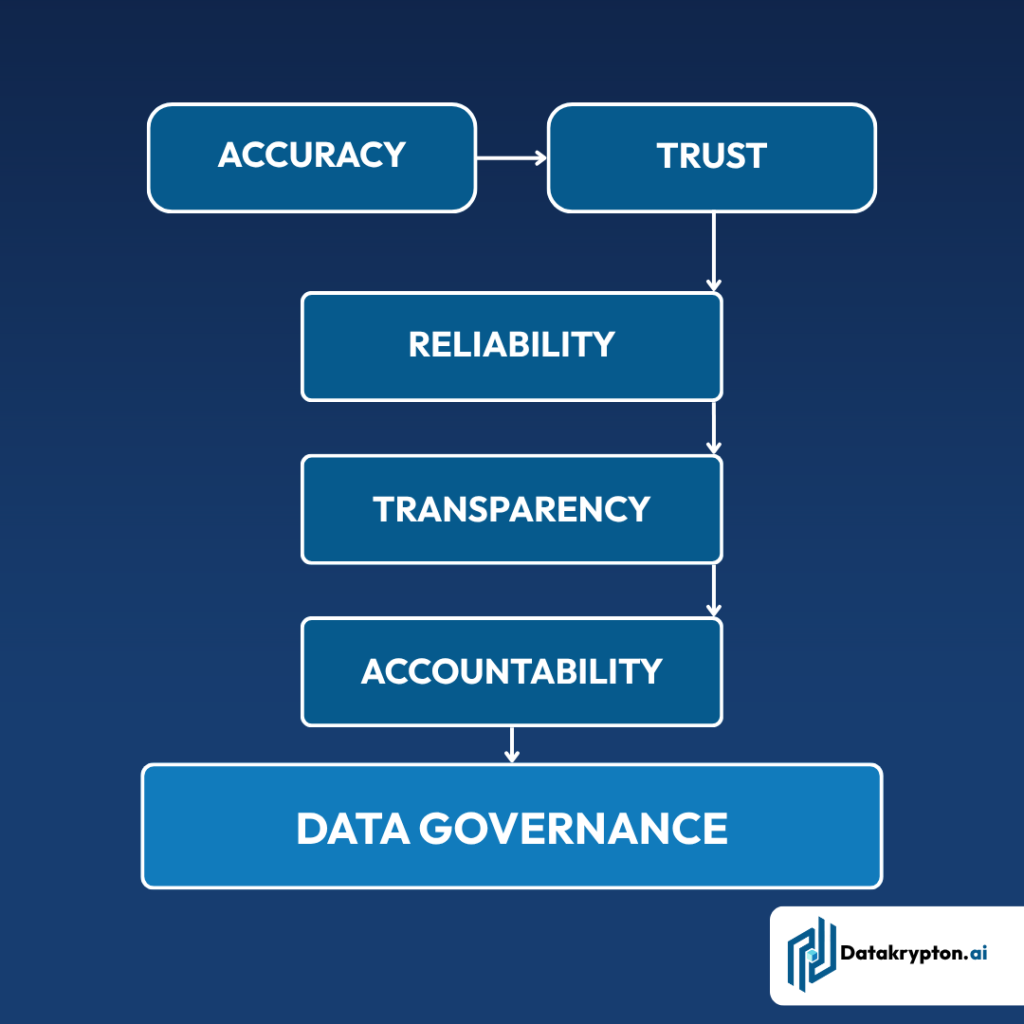
When these metrics are combined, they form a trust score that can be displayed alongside revenue, cost, or customer satisfaction metrics.
How Leading Enterprises Use Trust Scores
Enterprises across industries now treat trust scores as business KPIs.
Examples
-
- Financial institutions link trust metrics to compliance efficiency
- Healthcare systems monitor trust to improve patient data reliability
- Retail and manufacturing organizations track trust to enhance forecast accuracy
- Financial institutions link trust metrics to compliance efficiency
Trust scores guide decisions on where to invest in automation, governance, and observability.
Governance and Observability: The Core of Trust
Governance defines the framework for quality and compliance.
Observability provides real-time visibility into how data behaves inside that framework.
When both work together
-
- Anomalies are detected early
- Root causes are easier to trace
- Confidence improves across every analytics and AI layer
- Anomalies are detected early
How DataKrypton Builds Data Trust
DataKrypton.ai helps enterprises operationalize trust through
-
- Automated quality validation and scoring
- Centralized lineage and metadata management
- Real-time data observability dashboards
- Master data alignment and reconciliation
- AI-driven recommendations for continuous trust improvement
Trust becomes a measurable, maintainable asset not an abstract concept.
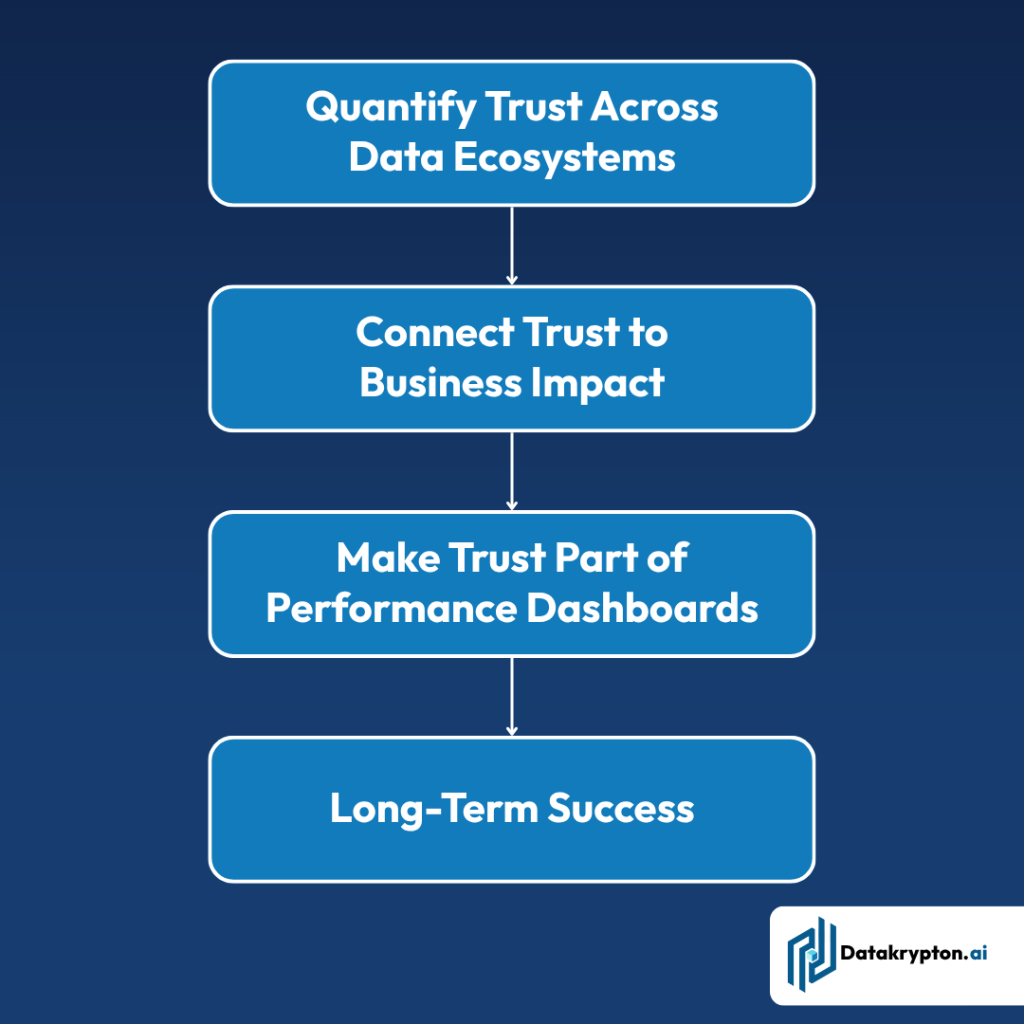
Conclusion
Data trust is the missing link between analytics and action.
When it becomes a measurable KPI, teams make faster, more confident decisions and leaders invest with clarity.
In the next decade, organizations that measure trust will outperform those that only measure data volume or accuracy.
FAQ
Data trust is the confidence that business users and systems have in the accuracy, consistency, and transparency of the data they use. It reflects how reliable the data is for decision making.
Data quality focuses on metrics such as accuracy, completeness, and timeliness.
Data trust expands beyond those metrics to include governance, lineage visibility, and accountability — the factors that make people confident enough to act on data.
Because data drives every key business process. When trust levels are measurable, leadership can see the direct impact of reliable data on revenue, risk reduction, and innovation speed.
Yes. Organizations use data reliability scores, lineage completeness, reconciliation accuracy, and validation success rates to calculate a trust index or trust score.
Observability tools monitor data pipelines in real time. They identify delays, anomalies, and schema changes before they affect analytics. This early detection prevents silent errors and builds long-term confidence.
Governance defines ownership, policies, and standards for how data is created and maintained. Strong governance ensures data remains consistent and compliant across systems, which directly increases trust.
AI models rely on clean, traceable, and well-governed data. When trust is high, models train on reliable inputs, produce better predictions, and require less manual monitoring or retraining.
Industries with regulatory, safety, or financial sensitivity — such as healthcare, banking, insurance, and manufacturing — see the greatest gains. However, every data-driven enterprise benefits from higher trust levels.
DataKrypton.ai delivers a unified framework for measuring, monitoring, and maintaining trust. It combines governance, observability, and AI-based validation to transform trust into a quantifiable business metric.
Â


